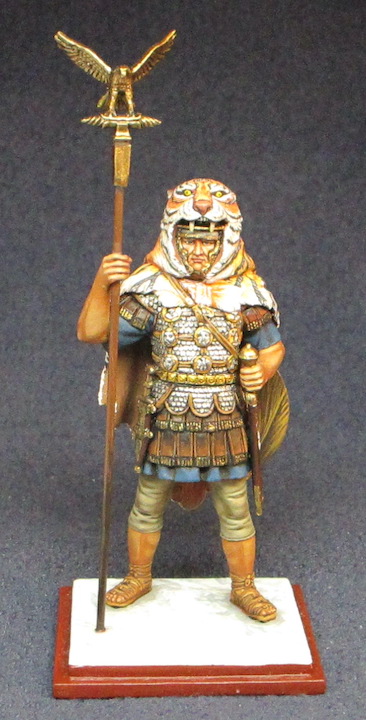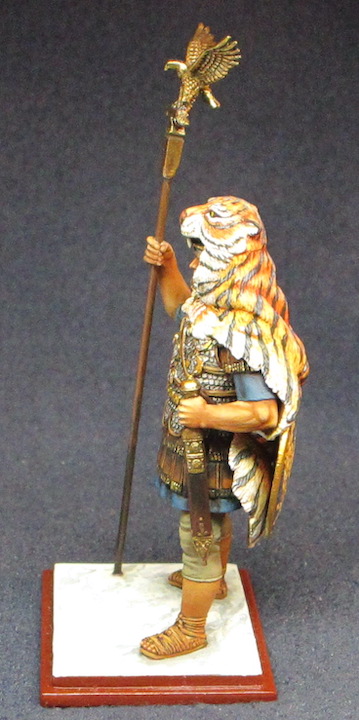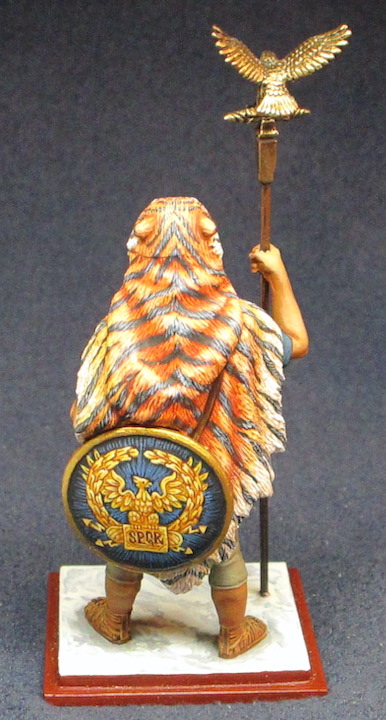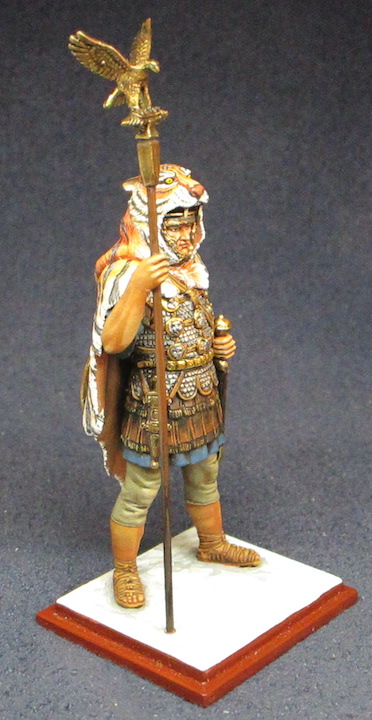Praetorian Aquilifer


From its initial modest numbers under Augustus, the Guards grew in number and political and military influence under subsequent emperors. The Praetorians became major power brokers often deciding who would become emperor.
Guard units were occasionally seconded to the frontier battlefields of the Empire, but for the most part their service was in Rome itself. The Praetorians received higher pay than their Legion counterparts and their service contracts were of shorter duration. The Praetorian Guards were eventually disbanded by Emperor Constantine in the first part of the 4th Century.
The single most important possession of a Roman legion was its AQUILA, its eagle. The eagle represented the spirit and soul of a legion and was to the legionnaires a sacred object. The gold eagle was secured in a shrine at legion headquarters and guarded. When the legion marched the aquilifer with the eagle would always be located at the head fo the legion. The aquilifer whose duty was the responsibility for the eagle was an office of the legion ranking just below a centurion. The loss of an eagle to the enemy was for a legion the ultimate disgrace and usually resulted in the elimination of that legion from the Roman Army.



 Up
Up